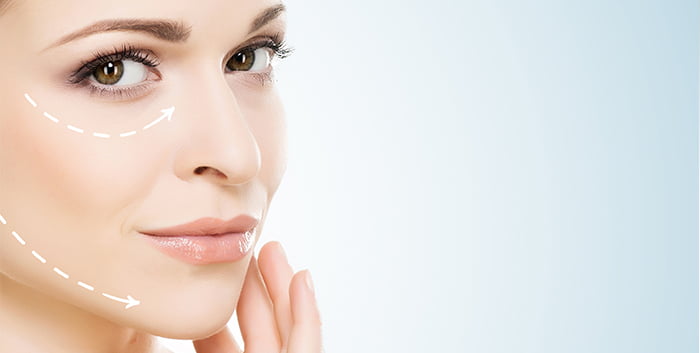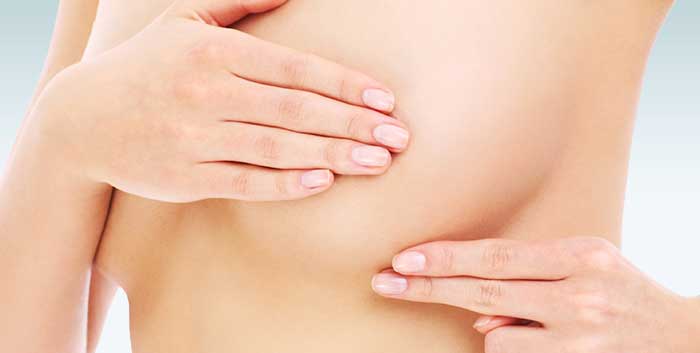With the passing of time, the eyelids are undergoing changes that, on the aesthetic level, are a burden on the general appearance : a tired-looking, dull and dull ages the whole face.
Factors like heredity, the tobacco, the effects of the sun or even the collapse of the front can accelerate these changes and the effects are felt generally on 3 levels :
• The upper eyelids heavy and drooping
• Of the lower eyelids drooped and wilted
• Of “bags under eyes” caused by herniation of fat
The blepharoplasty is the gesture of plastic surgery that aims to remove the disgraces present, whether due to age, environmental factors or inherited.
Once the problem is fixed the eyes look more rested, relaxed, and bright. The face lights up and recovers its freshness.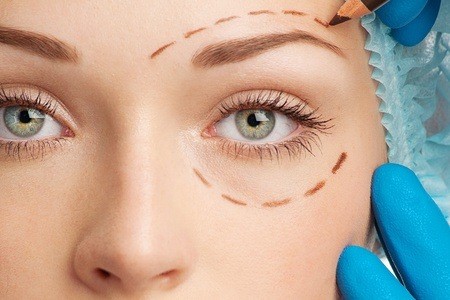
Table of Contents
TogglePrinciple
The intervention aims to remove surgically the excess muscle and skin and pockets of fat, but without altering the essential functions of the eyelids.
The surgeon begins by making an examination of the eyes and eyelids in order to search for abnormalities that may complicate the procedure, even the contra-indication.
The surgeon can also request a review of ophthalmology specialist in order to detect a possible pathology of the eye.
This response can touch the upper lids only (blepharoplasty upper), the lower lids only (lower eyelid blepharoplasty) or both eyelids at the same time with removing pockets of fat.
Thorough clinical examination and the will of the patient will determine the best solution to his case.
A blepharoplasty can be performed in isolation or be associated with other cosmetic surgery procedures of the face (cervico-facial lift, temporal lift, etc)
Who is the blepharoplasty.
The eyelid surgery is also good for women as for men who suffer from sagging at the level of the muscles and the skin of the eyelids. Generally considered midlife, this can be done from the age of 18 years at the patient who present misfortunes constitutional (hereditary factors) non-age-related, and those with the presence of pockets of fat that are important.
Consultation

A blepharoplasty is one of the techniques of cosmetic surgery the most requested. It proposes to correct the signs of aging present at the level of the eyelids.
The doctor Atef Ghedira will ensure that your blepharoplasty made in Tunisia will bring you the result you are expecting
It will adapt the technique used depending on your case to ensure you have an optimal result. The look is cooler, and you seem to be in better shape and rested.
Blepharoplasty– The progress of the intervention
Type of anesthesia, and duration of hospitalization
The procedure can also be performed in “ambulatory,” that is to say, with a release on the same day after a few hours of monitoring. It happens that the surgeon wants to keep the patient for an additional day, if it sees the need.
The actual conduct of the operation and its duration
The techniques differ depending on the surgeon and the morphology of the patient’s face. However, the steps that have in most cases a common basis :
The Incisions :
• Upper eyelids : the incisions are hidden in the groove located at the mid-height of the eyelid, between the fixed part and the moving part of the eyelid.
• Lower eyelids, the incisions are placed 1 to 2 mm below the lashes ; in some cases they may extend a bit outside. In the case where the eyelid does not have excess skin to be removed, the surgeon may perform a blepharoplasty by trans-conjunctival where the incisions are made inside your eyelids. No scar is visible.
Resection :
The excess skin and muscle (if applicable) is removed and the fat deposits are removed. The exact technique varies according to the habits of the surgeon and the specific form of the patient’s eye.
End of the surgery : sutures+dressings
The surgeon performs stitches with very fine wire, usually non-absorbable (they are removed after a few days).
Depending on the techniques used by the surgeon, the number of the eyelids to operate, and the extent of improvements to be made, the procedure can last from a half hour to two hours.


Consequences common of the eyelid surgery
Appearance of bruising and edema (swelling) at the level of the eyelids. The presence of tearing the importance and duration are highly variable from one individual to another.
In some cases the patient finds difficulty to completely close the eyelids or feel a slight detachment from the external angle of the eye. These signs disappear fairly quickly in general. If these signs persist, the patient may seek the advice of the surgeon,
The wires are removed between the 3rd and the 6th day after the operation.
Follow-Up Postoperative
The first few days the patient feels some discomfort with the feeling of tightness of the eyelids , a slight irritation of the eyes or some visual disturbances. Hence the need to relax at maximum and avoid any violent effort.
It is advisable to stop the tobacco for a better wound healing
, It is advisable for the patient to wear sunglasses to protect her eyes from the direct light of the sun for a few weeks after the operation
Result
A period of 3 to 6 months is required to enjoy the result. At the end of this period, the tissue will have recovered all of their flexibility, mobility, and sensitivity. The scars would have faded in most cases.
The sagging of the skin as well as hernias fat will be gone correcting the appearance aged and tired and sad look. The eye is bright, natural and radiant face.
It is considered that the results of a blepharoplasty are generally among the most durable of the cosmetic surgery . However, the skin will continue to age normally as it does on other parts of the face. A new intervention may be re-considered in 12 to 15 years.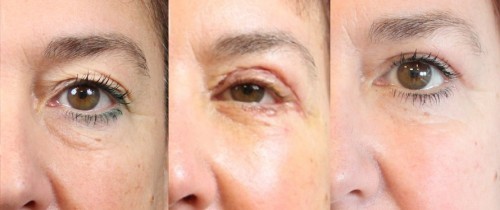
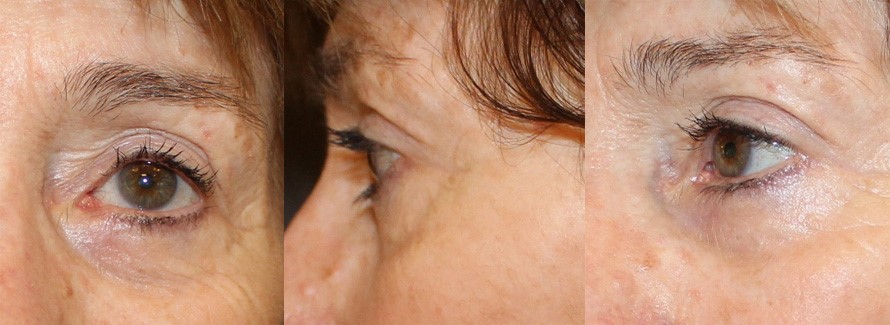
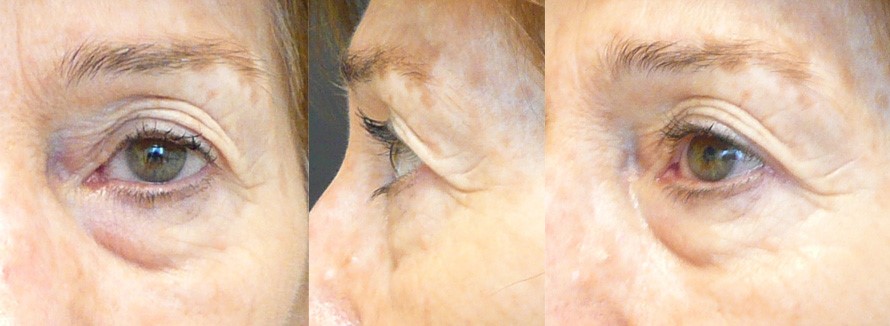
Chirurgia Towers answers to your most frequently asked questions:
Blepharoplasty is a surgical procedure that aims to correct surface defects of the eyelids, such as the loosening of the skin, the pockets of fat or the appearance of dark circles. Like any operation, it is not without risk, even if they are infrequent. Among the possible complications can include :
- The appearance of a bleeding that must be evacuated by a new intervention.
- An irritation or infection of the eye that requires a correct treatment.
- Disorders of the healing that can make the scars more visible and unsightly.
- A change in the secretion of tears may lead to excessive tearing or dry eye.
- A difficulty to completely close the eyelids, especially the upper eyelid, if too much skin was removed. This phenomenon may improve with time or may require surgical correction
There is no specific age for a blepharoplasty, but it is advisable to wait at least 40 years, because it is from this age that the first signs of ageing are most visible at the level of the eyelids. However, some people may have droopy eyelids or bags under the eyes from the thirties, because of heredity or of a poor lifestyle. In this case, a blepharoplasty can be considered earlier, if the patient wants to, and if the surgeon deems it appropriate. The important thing is to consult with a qualified specialist who will advise and inform you on the risks and benefits of this intervention.
Blepharoplasty is a cosmetic surgery procedure that allows you to modify the shape and appearance of the eyelids. It can be performed on the upper eyelids, lower, or both at the same time, according to the needs and expectations of the patient. The goal is to rejuvenate the eyes by removing excess skin, muscle or fat, which increases the eyelids in or create bags under the eyes. The procedure is done under general anesthesia, and lasts between 30 minutes and an hour. During the procedure, your surgeon makes incisions in the crease of the upper eyelid or under the lashes of the lower lid, and remove the excess fabric. He then redrape the skin or reposition the fat to align the contour of the eye. The incisions are finally sutured with very fine wire, which will be removed after a week. The scars are generally barely visible and fade over time.
Blepharoplasty is a cosmetic surgery of the eyelids, which aims to correct the sagging skin or pockets of fat that it look like a tired or sad look. According to the testimonies of doctors and patients, the blepharoplasty is not very painful. It can cause a feeling of tightness or discomfort at the level of the eyelids for a few days, but it clears up quickly with painkillers and cold packs. The picture may be slightly disturbed by the ointments protective or edema, but it does not resume normal activity after about a week. The scars are usually discrete and fade with time. After a blepharoplasty, it is necessary to avoid exposure to the sun for several months and follow the surgeon’s advice to promote healing and cosmetic outcome.
To find out if you need a blepharoplasty , it is necessary to first identify the signs that can justify this intervention. Blepharoplasty is an eyelid surgery that aims to correct the defects of the aesthetic or functional to the next, such as :
- The upper eyelids drooping or heavy, making it look like a sad or tired, and that can interfere with vision.
- The bags under the eyes, which are due to a move or an excess of fat in the lower eyelids, and who give an aged appearance or tired.
- The rings, which are due to a dark discoloration of the skin under the eyes, and that may be associated with a digging or loosening of the area.
- The wrinkles or folds on the eyelids, which are due to the ageing of the skin and muscle.
If you are submitting one or more of these signs, and you want to improve the look of your eyes, you may want to consider a blepharoplasty. It should, however, consult a plastic surgeon qualified, who can examine you and advise you on which technique is the most suitable for your case.
After a blepharoplasty, it is important to follow some guidelines to promote healing and minimize complications. Among these instructions, there is a way to sleep. Thus, after a blepharoplasty, it is better to sleep on your back, head slightly elevated with pillows, at least the first two weeks following surgery. This position will help to limit swelling of the eyes during sleep. You must also avoid rubbing your eyes or moisten them, because the scars are fragile and could reopen. In case of pain or discomfort, it is possible to take analgesics or apply cold compresses on the eyelids.
After a blepharoplasty, it is common to have bruising around the eyes, which can last from a few days to a few weeks. To avoid or reduce these blue, there are a few tips to follow :
- Before the operation, avoid taking blood-thinning medications or anti-inflammatory drugs that promote bleeding and inflammation.
- After the operation, apply cold compresses or ice on the eyelids for 10 to 20 minutes, several times a day to reduce the swelling and pain.
- Sleeping on the back, with the head slightly elevated by pillows, to facilitate lymphatic drainage and avoid the stagnation of the blood.
- Take a homeopathic treatment based arnica, which helps to reduce the number of bruises and speed up the healing process.
- Wait at least a week before applying makeup or disguise the blues with a concealer or a foundation.
Avoid exposure to sunlight or UV light for at least three months, because they can repigment the scars and make them more visible.
Blepharoplasty is a surgical procedure that aims to correct the droopy eyelids by removing excess skin and fat. However, some people do not wish to use a scalpel or do not represent a loosening of the skin sufficient to justify the operation. In this case, there is an alternative non-surgical blepharoplasty, as the Jet Plasma Lift or the Plasma Pulse. These techniques use a device that generates a plasma arc which will cause the retraction and tightening of the skin of the eyelids. They are less invasive, less painful and faster than surgery and does not leave scars or bruises. They usually require several sessions spaced a few weeks, and offer a natural result and sustainable.
Blepharoplasty can be practiced by any healthy adult who wants to improve the appearance of her eyelids. There is no age limit for this operation, but it is generally done from 40 years ago, when the signs of aging are most visible. Blepharoplasty may also be indicated for medical reasons, for example when the drooping eyelids obstruct the vision.
After a blepharoplasty, it is normal to have swelling at the level of the eyes for a few days, or even weeks. To do that attenuate more quickly, it is necessary to follow some tips postoperative:
- Apply cold water compress or glasses refrigerant on the eyelids several times a day for 48 hours. This helps to decrease swelling, pain and bruising. You should avoid putting ice directly on the eyes.
- Elevate the head during sleep with two or three pillows. It promotes lymphatic drainage and reduces the retention of liquids.
- Apply a cream with vitamin A on the scars and between the eye and the eyelid every night for a week. This promotes healing and flexibility of the skin.
- Massage the eyelids from the 10-day, starting from the nose and pushing the swelling around the ear, every night for 15 days with a moisturizing cream. This stimulates the circulation of blood and lymph.
- Avoid the muscular effort, the sports, the currents of air, the sunshine and the make-up during the first week. This avoids the need to seek the eyelids and cause bleeding or irritation.
The solutions against the eyelids that fall
Depending on the cause and severity of the ptosis, there are different solutions to address the eyelids that fall :
Make-up : it helps create the illusion of a look more open and bright, using mascara, eye shadow, clear and white pencil.
The facial exercise : it is to perform exercises that strengthen the muscle tone of the eyelids, such as raised eyebrows, squinting or frowning the front.
Beauty care : they are designed to hydrate, strengthen and smooth the skin of the eyelids, using creams, anti-aging, masks or patches.
The aesthetic medicine : it offers non-invasive techniques to raise the eyelids, such as botox or hyaluronic acid, laser or radiofrequency.
The surgery involves removing excess skin and fat at the level of the upper eyelids, in a procedure called blepharoplasty.
The droopy eyelids, or ptosis, is a falling of the upper eyelid, which may have consequences aesthetic and functional. They can be caused by aging, genetics, medications, eye injury or neurological diseases. There are several solutions to this problem, from the makeup to the surgery. But who to consult for droopy eyelids ?
Ophthalmologist
The ophthalmologist is a medical doctor who specializes in eye and vision. It can diagnose the cause of the ptosis, assess its impact on the view and prescribe medical treatments if necessary. It can also perform complementary tests, such as a visual field, or a measurement of intraocular pressure, to rule out other pathologies of the eye.
The plastic surgeon to
The plastic surgeon is the medical doctor who specializes in cosmetic and reconstructive surgery. It can propose solutions for improving the appearance of droopy eyelids, taking into account the expectations and needs of the patient.
The plastic surgeon may also perform a blepharoplasty, but it may also use other non-invasive techniques such as botox or hyaluronic acid, laser or radiofrequency. These methods are designed to strengthen and smooth the skin of the eyelids, without going through the knife.
The neurologist
The neurologist is the specialist of the nervous system, which includes the brain, spinal cord and nerves. He may intervene in the case where the droopy eyelids are due to a neurological disease, such as myasthenia gravis, brain tumor, aneurysm, or stroke.
The neurologist can prescribe medication or surgery to treat the underlying cause of the ptosis. It can also ensure a regular monitoring of the patient, and assess the evolution of its state.
The droopy eyelids, or ptosis, is a falling of the upper eyelid that may affect the eyes and vision. There are several types of injections that can help to correct this problem, depending on the cause and degree of ptosis.
Injections of botulinum toxin, or botox, is intended to relax the orbicular muscle, which surrounds the eye, and which may be responsible for the ptosis. Releasing this muscle, the muscle front end, which raises the eyelid, and becomes stronger and enhances the look. This technique is simple, quick and not very painful, but it can lead to complications as a lid that falls more or asymmetry of the face. The results are temporary and last approximately 4 to 6 months.
Hyaluronic acid injections that are designed to fill in and re-hydrate the dermis of the upper eyelid, which can be collapsed or dug. By restoring volume and elasticity to the skin, these injections can smooth away wrinkles and rejuvenate the look. This technique is also easy, quick and not very painful, but it may cause you to bruise or swelling. The results are more durable and can go up to 18 months.
In conclusion, injections for drooping eyelids are solutions in non-surgical that can improve the look of the look. It is advisable to consult a physician who specializes in eye and the eyelids to choose the type of injection is the most suitable to your case.
The droopy eyelids are generally due to the aging of the skin, which loses its elasticity and firmness. But there are also other possible causes, such as neurological, muscular, or vascular, which can affect the operation of the levator muscle of the eyelid. For example, diabetes, brain tumor, a stroke, or dissection of carotid artery can cause ptosis, which is to say, an abnormal fall of the upper eyelid. Therefore, it is important to consult a doctor in case of eyelid drooping to determine the cause and the appropriate treatment
The operation of the eyelids, or blepharoplasty, is a procedure that aims to correct the defects of the aesthetic or functional use of the upper or lower eyelids. It can be indicated in the case of drooping eyelids, puffiness under the eyes, excess skin or fat, or congenital malformations. It is necessary to consult a surgeon specialist to assess the need for and modalities of the operation, as well as the risks and benefits.
If you have the eyes, sagging, or tired, there are natural solutions for back and rejuvenate. First of all, it’s important to stay hydrated by drinking enough water and avoiding sources of dry eye, such as screens or air conditioning. Then, you can apply cold compresses to your eyelids for a few minutes to tone and decongest. You can also use natural products like castor oil or aloe vera gel to nourish and firm the skin of the eyelids. Finally, you can practice facial exercises to stimulate the muscles of the eyes and prevent the sagging of the skin. For example, you can stare eyes for a minute, then firmly close for a few seconds. Repeat this exercise several times a day to strengthen your eyelids .

